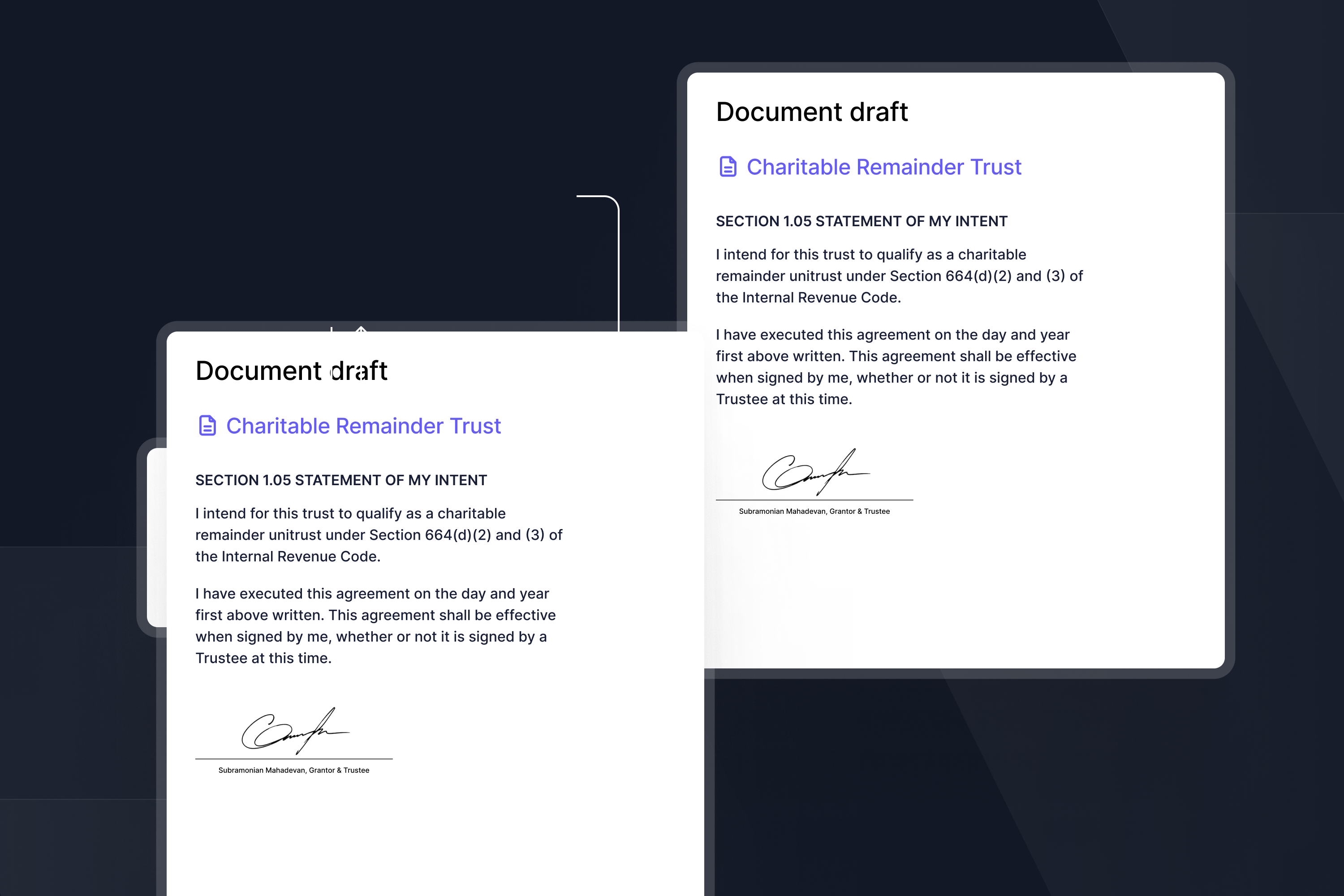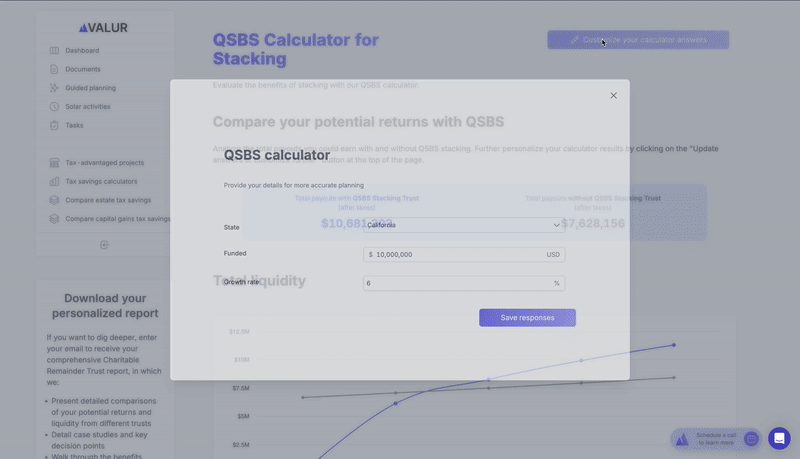
FEATURED ARTICLE
Tax Planning for Realized Gains and Ordinary Income
Tax planning strategies for realized gains and ordinary income

Tax planning strategies for realized gains and ordinary income


We’ve covered some important aspects of QSBS over the past few months, including the basics of the QSBS exemption, its history, and how you can increase your QSBS exemption benefits.
In this article, we’ll answer a question we hear a lot: “How does Valur optimize its QSBS stacking trusts to maximize returns?” Our team has spent countless hours analyzing the use of various types of trust, and we have identified a Charitable Remainder Unitrust (CRUT) as a great vehicle for stacking/increasing your QSBS benefits.
What is a CRUT? Simply put, a Charitable Remainder Trust, or CRUT, is an irrevocable trust typically used by individuals looking to defer capital gains taxes on an appreciated asset sale. They’re also a tool of choice for QSBS stacking, because they qualify as an individual shareholder and, therefore, receive their own $10 million QSBS exemption.
Any individual using a Charitable Remainder Trust for QSBS stacking likely has a few simple goals:
With those goals in mind — minimizing taxes, maximizing returns, and doing so on the shortest timeline possible — here is the structure we have designed for QSBS Stacking:
Take Tommy, a successful entrepreneur living in Oregon. Tommy has $20 million of QSBS-eligible shares from his business, and he is expecting an exit imminently. He’s narrowed down his tax planning options to two scenarios, and he’s trying to evaluate the pros and cons of each.
An important note before we dig in: Regardless of the planning choices Tommy makes, his first $10 million of gains will be tax free — that’s why we call QSBS the best tax break around. The question is what he should do with the next $10 million of QSBS-eligible equity.
Option 1: Do nothing. Imagine that Tommy does no planning for the remaining $10 million. When he sells, he’ll owe 35% taxes (federal and state capital gains tax and the federal net investment income tax). That means he’d keep $6.5 million of after-tax proceeds to spend or invest as he sees fit.
Option 2: QSBS stacking with a CRUT. Now consider what happens if Tommy places the remaining $10 million into a CRUT prior to selling. When he sells, the trust keeps $10 million because the trust gets it’s own QSBS exemption. Oregon conforms to federal QSBS standards, so this amount is entirely free of federal and state taxes. (Note, though, that five states, including California, do charge state tax on QSBS-eligible gains.)
Are you curious how QSBS stacking could maximize your savings? Explore your options today!

Let’s break down the math so you can understand the assumptions, the outcomes, and the real value.
The assumptions:
Using Trust
Over 4 years, assuming Tommy reinvested his earnings at 8% growth, the trust would distribute $11.28 million of after-tax proceeds, while only incurring a tax bill of $1.2 million. (Why is there a tax bill if the assets are QSBS eligible? Because Tommy will be taxed on the investment gains of the QSBS exit proceeds as they are reinvested inside the trust — here, about $2.5 million of gains over 4 years.) Additionally the charity of Tommy’s choice would receive approximately $1.35 million. (This amount could go to his private foundation or donor-advised fund, so he retains significant control over those proceeds.)
Not Using Trust
After 4 years, assuming Tommy invested the total after-tax sale proceeds of $6.5 million for 4 years at an 8% annual return and didn’t take distributions (ensuring an apples-to-apples comparison to the trust), he would have $8.0 million of after-tax proceeds, while incurring a tax bill of $4.3 million! That’s $3.5 million of taxes on the initial sale and an additional $800K of taxes on the after-exit growth.
By using a Charitable Remainder Trust to stack his QSBS exemption, Tommy ends up with an additional $3.25 million (or 40%) above where he would otherwise have been if he had done no planning at all. These numbers — and the short time horizon — make the QSBS-stacking CRUT a no-brainer for almost anyone who expects more than $10 million in capital gains from the sale of QSBS-eligible assets.
Ready to set up a CRT for your QSBS stacking strategy? Call us now to get started!
We’ve built a platform that makes advanced tax planning – once reserved for ultra-high-net-worth individuals – accessible to everyone. With Valur, you can reduce your taxes by six figures or more, at less than half the cost of traditional providers.
From selecting the right strategy to handling setup, administration, and ongoing optimization, we take care of the hard work so you don’t have to. The results speak for themselves: our customers have generated over $3 billion in additional wealth through our platform.
Want to see what Valur can do for you or your clients? Explore our Learning Center, use our online calculators to estimate your potential savings or schedule a time to chat with us today!